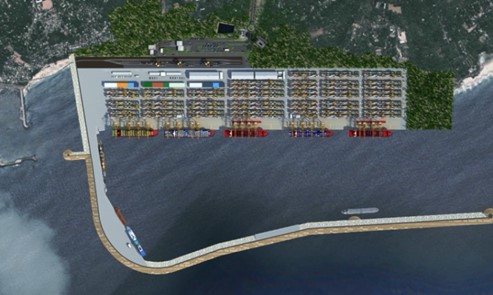
The ambitious
project aims to commence trial operations by April of this year.
The installation process involves the setup of 11 yard
cranes and four ship-to-shore cranes. As of now, nine cranes have been
successfully installed, with the remaining two expected to be operational
within the next month. The ongoing operations involve the examination of crane
functionality using empty containers.
The installation work is being carried out by the
Indian unit of Shanghai Zhenhua Heavy Industries Company Limited (ZPMC). The
precise positioning of the cranes plays a crucial role in determining their
efficacy, and their functioning will undergo scrutiny based on various
parameters, according to a port official.
Several procedural steps precede the commissioning of
the cranes before the first ship carrying containers docks at the port, expected
within the next couple of months, as per the report.
Most of India’s container traffic business is
currently handled by transshipment hub ports such as Colombo, Singapore,
Salalah (Oman), Jebel Ali (DP World’s flagship port in Dubai), and Tanjung
Pelepas and Port Klang (Malaysia).
The biggest ships linking Europe and the Far East
cannot dock at any Indian port. India lacks container transshipment
infrastructure capable of servicing them. Only a handful of ports, including
Mumbai, Mundra, Kochi/Vallarpadam, Chennai and Visakhapatnam have container
handling facilities.
It is in this context that Vizhinjam port assumes huge
significance.
Vizhinjam, located
about 14 km from Kerala’s capital city of Thiruvananthapuram, has a natural
depth of over 18 metres and is located hardly 10 nautical miles (18 km) from
the international shipping route from West Asia, Africa and Europe to the far
eastern regions of the world. Additionally, the
availability of a 20-metre contour within one nautical mile from the coast,
minimal littoral drift along the coast, the natural depth that excludes the
need for maintenance dredging, potential for better road, and rail transport
link potential make Vizhinjam a strategic well-suited for the greenfield
project.
Vizhinjam is envisaged to be an all-weather,
multipurpose, deepwater, mechanised, greenfield port that seeks to garner the
lion’s share of the Indian transshipment cargo now being handled by the nearby
foreign ports and emerge as the future transshipment hub of the country. Once
phase 1 becomes operational, Vizhinjam port is projected to handle 1 million
TEUs ( 20-foot equivalent container units), and in subsequent phases, another
6.2 million TEUs will be added, which makes up over 70 per cent of the
country’s current transshipment.
The port’s impact
extends beyond direct operations, with expectations of employing around 5,000
people initially. Additionally, numerous indirect businesses
associated with the port are poised to benefit from its operations, ushering in
a new era of economic opportunities in the region.